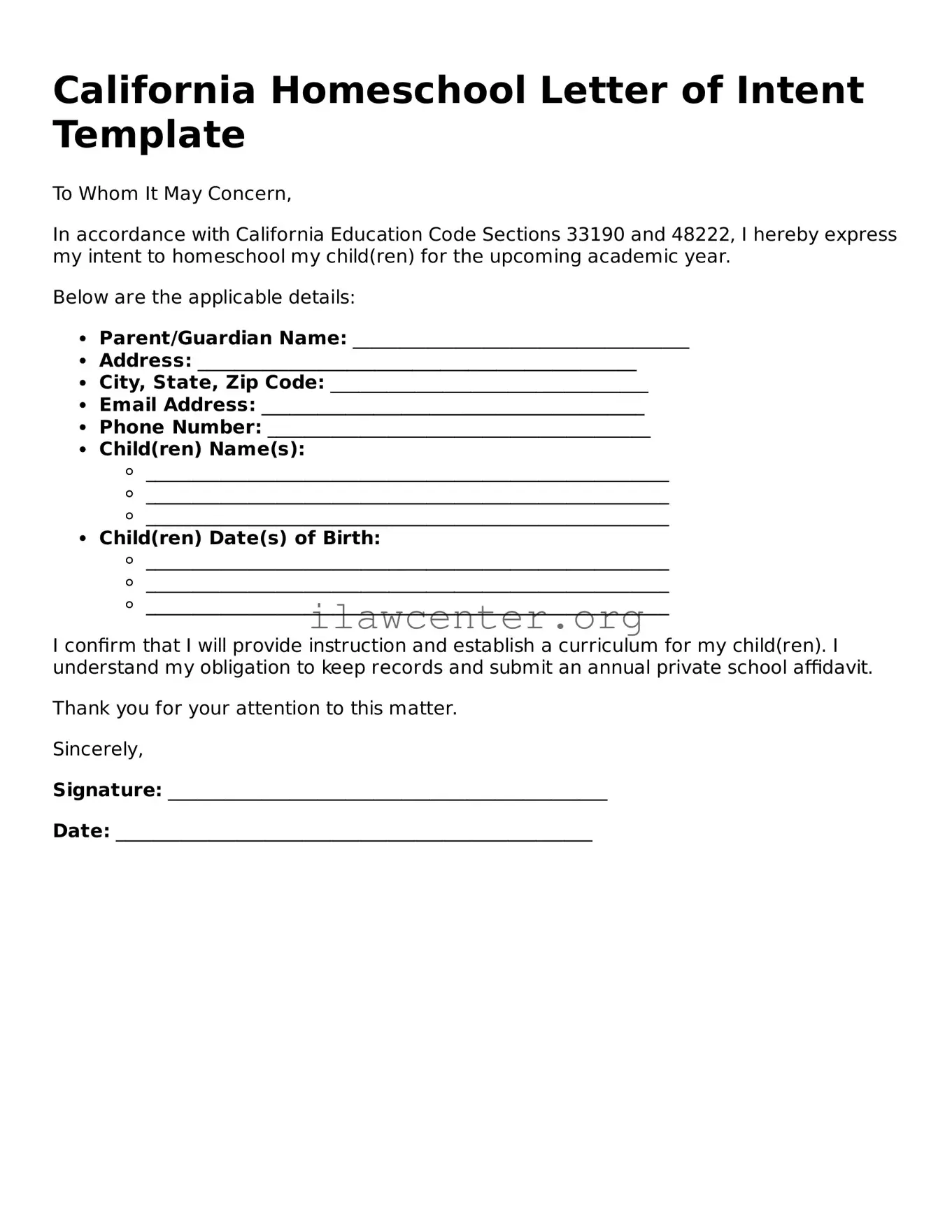Instructions on Utilizing California Homeschool Letter of Intent
Filling out the California Homeschool Letter of Intent form is an important step for families planning to homeschool their children. This document communicates your intention to the local school district and outlines basic information about your homeschooling plans.
- Obtain the form: Download the California Homeschool Letter of Intent form from the California Department of Education website or your local school district's website.
- Fill in your information: Provide your full name, address, and phone number. Make sure this information is accurate and current.
- List the students: Include the full names and birth dates of all children you intend to homeschool. Ensure proper spelling and correct birth dates.
- Choose school year: Indicate the school year for which you are submitting the intent. Typically, this is the current school year.
- Sign and date the form: Ensure that you sign at the bottom of the form. Add the date of the submission to complete the process.
- Submit the form: Submit the completed form to your local school district office. Retain a copy of the letter for your records.
After you submit the form, it will be processed by the school district. Keep any correspondence you receive, as this may be important for future homeschooling requirements.
